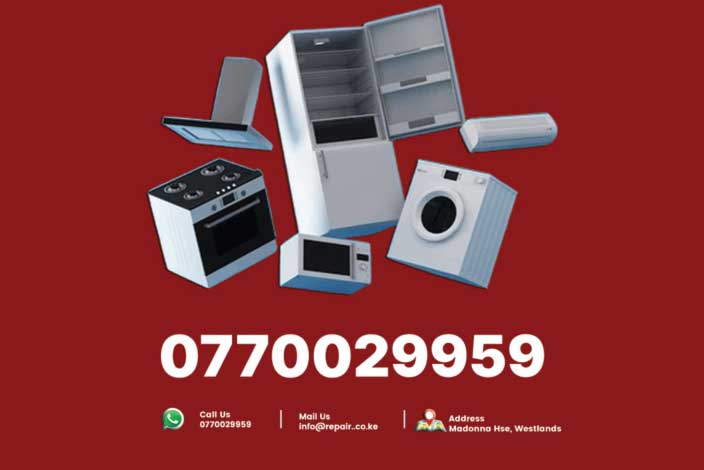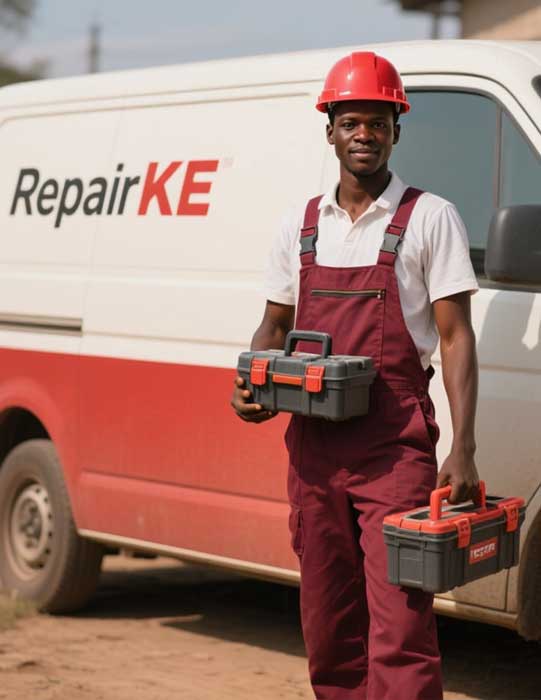Top-load Washing Machines, How They Look & Function
Top-load washing machines are popular in many Kenyan homes. They are designed for easy use and efficient cleaning. Repair.co.ke explains how these machines look and work, helping users understand their features and maintenance needs.
Appearance of Top-load Washing Machines
Top-load washing machines have a box-like shape. They are usually rectangular, with a height of about 3 to 4 feet and a width of 2 to 3 feet. The top has a hinged lid that opens upward, giving access to the washing drum inside. The drum is a large, cylindrical tub where clothes are loaded. Most machines are made of metal or durable plastic, with a smooth finish in colors like white, silver, or grey.
The control panel is on the top, near the back. It has buttons, dials, or a digital display for selecting wash cycles, water levels, and other settings. Some models have touch controls, while others use knobs. The machine sits on four sturdy legs, often adjustable for stability on uneven floors. A water inlet hose connects to the back for filling the drum, and a drain hose removes dirty water. Some models have a lint filter or a small compartment for detergent and fabric softener.
Top-load washing machines come in different sizes. Smaller models hold 6-8 kg of clothes, ideal for small families. Larger ones handle 10-15 kg, suited for bigger households. The design is simple, with a focus on functionality and ease of use.
How Top-load Washing Machines Work
Top-load washing machines clean clothes through a series of steps: filling, washing, rinsing, and spinning. The process starts when you load clothes into the drum and add detergent. You select a wash cycle on the control panel, such as normal, heavy, or delicate. The machine then fills the drum with water through the inlet hose, using a valve to control the flow.
The washing action depends on the type of top-load machine: agitator or impeller. Agitator models have a tall, central post in the drum with fins or blades. This agitator rotates and moves clothes through the water, scrubbing them to remove dirt. Impeller models use a low-profile disc or cone at the bottom of the drum. The impeller spins, creating water currents that tumble clothes gently. Impeller machines use less water and are gentler on fabrics but may take longer to clean heavily soiled clothes.
After filling, the machine starts the wash cycle. The drum or agitator moves back and forth, mixing clothes with water and detergent. This movement loosens dirt and stains. Wash cycles last 10-30 minutes, depending on the setting. Sensors in modern machines detect the load size and adjust water levels for efficiency.
Once washing is complete, the machine drains dirty water through the drain hose using a pump. It then refills with clean water for the rinse cycle. The drum moves again to rinse out detergent and remaining dirt. Some machines have multiple rinse cycles for thorough cleaning. After rinsing, the machine drains again.
The final step is the spin cycle. The drum spins at high speed, often 700-1200 RPM, to remove water from clothes. This makes drying faster, whether air-drying or using a dryer. Some models have adjustable spin speeds for delicate fabrics. The entire process, from wash to spin, takes 30-60 minutes, depending on the cycle.
Key Features and Components
Top-load washing machines have several important parts. The motor powers the drum’s movement and spin cycle. The transmission controls the agitator or impeller’s motion. The water pump handles filling and draining. The control board, a small computer in modern machines, manages cycles and settings. Some models have sensors for water level, temperature, and load balance to improve efficiency.
Many top-load machines offer extra features. Fuzzy logic or smart control adjusts settings based on load size and fabric type. Some have pre-soak options for tough stains or quick-wash cycles for small loads. Eco-friendly models use less water and electricity. Others include a delay start, letting you set the machine to run later.
Maintenance Tips from Repair.co.ke
To keep top-load washing machines working well, regular care is needed. Clean the drum monthly to remove detergent buildup and odors. Use a damp cloth to wipe the lid, control panel, and exterior. Check the lint filter regularly and clean it to prevent clogs. Inspect hoses for leaks or cracks and replace them if damaged. Avoid overloading the drum, as this strains the motor and transmission.
If the machine vibrates excessively, check that it’s level on the floor. Adjust the legs if needed. For issues like no power, strange noises, or water leaks, contact Repair.co.ke for professional service. Our technicians in Kenya diagnose and fix problems like faulty motors, broken agitators, or clogged pumps. We use genuine parts to ensure long-lasting repairs.
Top-load washing machines are reliable and user-friendly. Understanding their design and function helps users choose the right model and maintain it properly. Repair.co.ke offers expert repair services across Kenya to keep your machine running smoothly.






